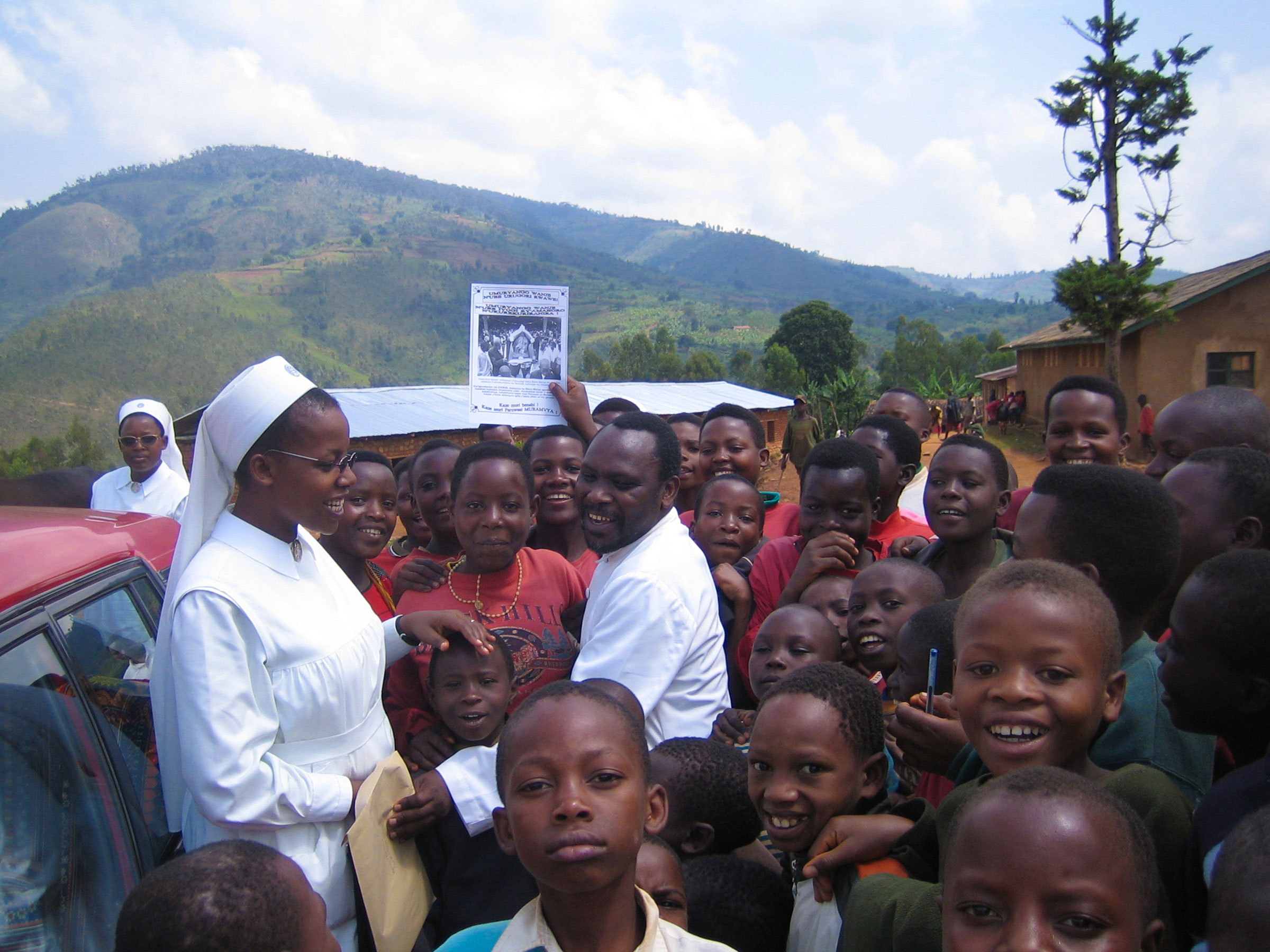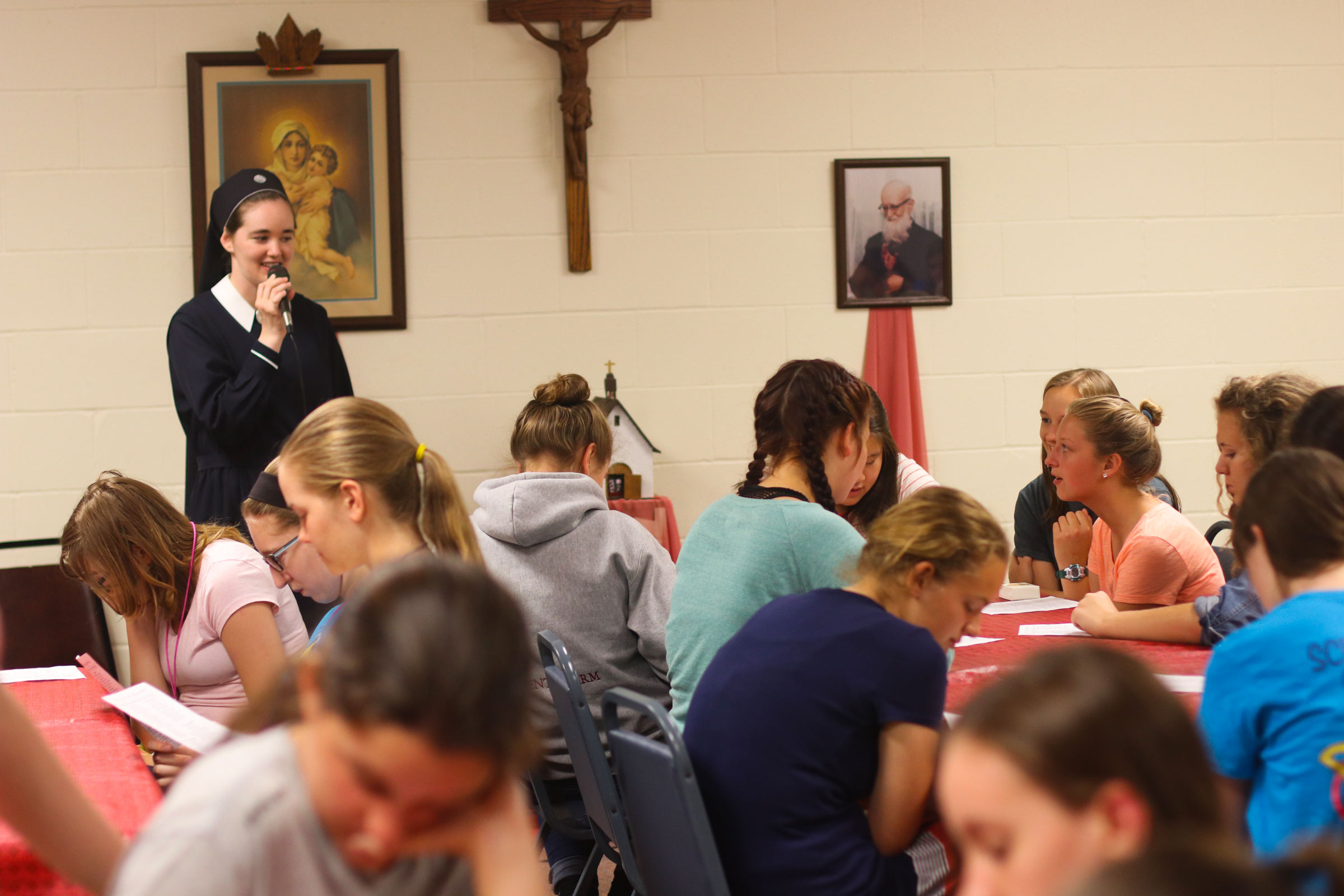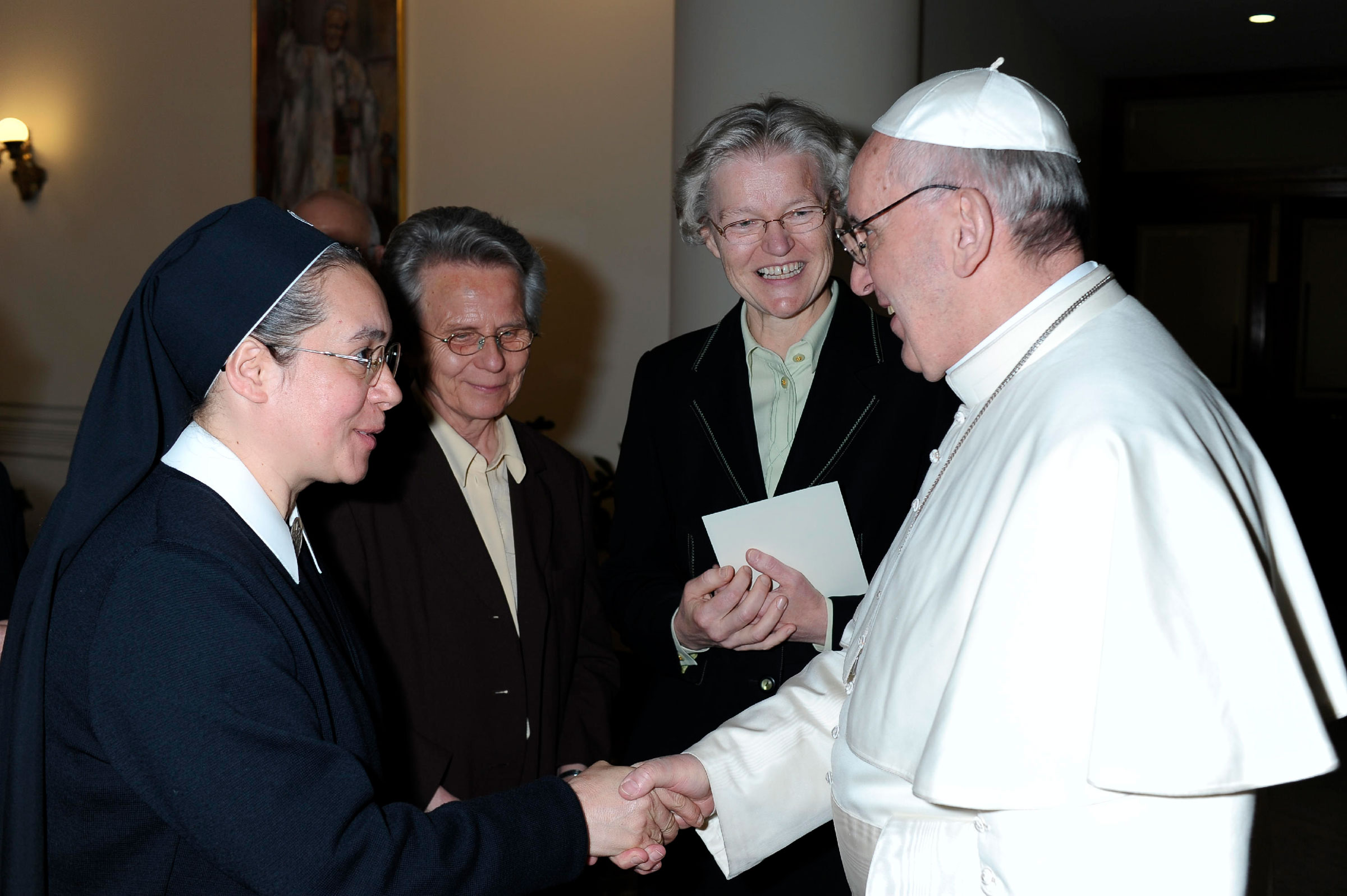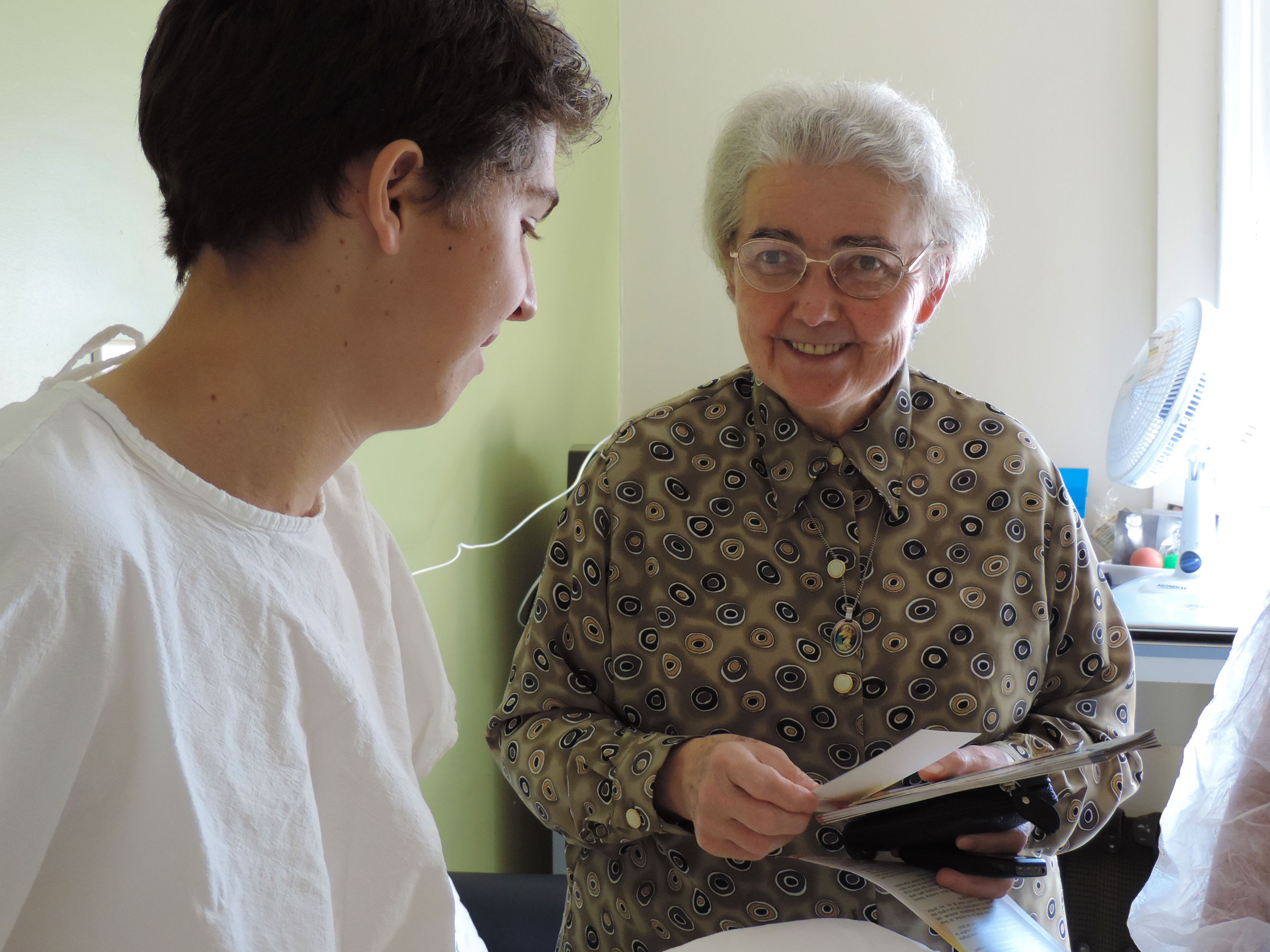“Carry the work of your founder into the future and enrich the life of the Church with your charism …”
(Pope John Paul II to our institute, September 16, 1994)
Be Mary
“Behold, your Mother! – Behold, your Son!”
(John 19:27)
From the cross Jesus gave us his Mother Mary.
“She is the missionary who comes close to us in order to accompany us in life, and so in her motherly love she opens hearts for the faith!”
(Pope Francis)
At every moment Mary is the one who brings Christ into the world. Today she also wants to do so through us.
In the covenant of love, she gives herself with her entire personality, with the whole fullness of life and love that she has received from God. Her being as Immaculata – God‘s “unspoiled concept” of the human person (I.F. Goerres) – shows in a captivating way what God’s grace is able to achieve. She makes clear to us what it means to be genuinely human as a follower of Christ. For this reason, we take our bearings from her.
God’s longing is that we pass on the tender motherly love of Mary. We are to continue her selfless service of life and of the human person. We are to reflect the purity of her love, the clarity of her thinking, the freedom of her deciding, her absolute openness for God’s wish and will. For this God has called us.
“The prayer to the Blessed Mother that Father Kentenich formulated during his imprisonment in Dachau remains … very timely today: ‘Walk in us through our times and make them ready for Christ!’”
(Pope John Paul II to our institute, September 16, 1994)

Soul of the Schoenstatt Work
Every work of God, if it is to bear fruit, must preserve the spark of life granted by his grace.
This requires constant attention to details as it grows in the depth and in the width. “To be the soul,” in Father Kentenich’s words, means just this.
Our institute was founded in order to serve the Schoenstatt Work in this way.
Concretely, our service includes:
accompanying married couples and families on their journey with one another and with God, so that they can live their sacramental marriage relationship with growing love and pass on positive natural and religious fundamental experiences to their children
to support single women and mothers and help them discover how they can enrich their families, society, and the Church through their God-given womanly strengths
to help girls and young women to develop their personalities, and to show them how they can shape their lives as Christians in today’s world and so influence it from within, bringing about new life.

In the Heart of the Church
“You would like to repeat the ‘Dilexit Ecclesiam’ that distinguished the life and work of your founder, Father Joseph Kentenich, and inscribe it anew into your hearts.”
(Pope John Paul II to our institute, September 16, 1994)
“DILEXIT ECCLESIAM” – he loved the Church. Father Kentenich wished to have these words as the inscription on his grave. He placed himself and his foundation entirely at the service of the Church, his great love.
Through the covenant of love with Mary in Schoenstatt, a new wellspring of grace broke forth – from the heart of the Church and for the worldwide Church.
Whoever knows the way to the spring must tell others. It urges us to commit all our strength for the evangelization of peoples in various cultural contexts.
“Schoenstatt brings a remarkable missionary dynamic into the Church. How many initiatives of evangelization and formation for youth, adults – men, women, and families! But above all: How many people can testify that their lives have changed here in the shrine! How many young people have experienced through Schoenstatt the joy of the faith and the beauty of being a Christian! How much missionary potential in individuals and communities has already been uncovered here and placed at the service of the Church!”
(Cardinal Stanisław Ryłko, October 18, 2013)

Keep the World Open for God
“… and the Mother of Jesus was there.” (John 2:1)
Like Mary, we, too, want to “be there” wherever people rejoice and hope, wherever they live in sadness and fear, wherever they encounter the questions of life and work to shape their own lives and surroundings.
We want to “be there” in order to keep our world open for God and his work of sanctification. It is our task to take in the rhythm of life in order to direct it to God. This task begins in our own hearts and becomes concrete in our work – in the service of our own community, at our workplaces in Church institutions, as well as in the most varied professional fields of civil life. For this reason, sound human and professional skills are important to us.
Whether in lay clothing or in the uniform dress of the Sisters of Mary, whether through words and exterior signs or simply through our personality: We always want to build bridges that allow heaven and earth to meet – even in places where one no longer speaks of God. For:
“We want to show through our lives that God lives.”
(J. Kentenich)
